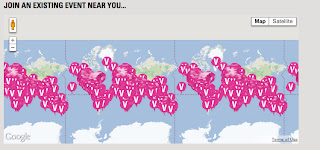Since the beginning the the semester, we have focused on how companies need to utilize the groundswell and engage internet users.
We have learned numerous strategies for tapping, understanding, talking, and listening within the groundswell.
We have even seen examples of how, in the form of case studies, companies have successfully used the groundswell to increase their reach and gain new customers.
Up until now though we haven't talked about a key element to every business that could also benefit from using the groundswell: employees.
Employees are what help make a business successful, so it only makes sense that for them to have a way that they can communicate and share ideas with one another.
In chapter 11 of Groundswell, Li and Bernoff talk about the benefits of utilizing the groundswell internally. "Throughout corporations around the world, employees are connecting on social networks, collaborating on wikis, and contributing to idea exchanges. Some of these applications came from management and others began as skunk-work projects, but what they have in common is this: they tap the power of the groundswell of ideas among the people who know best how your business runs, your employees."
My favorite case study that Li and Bernoff talk about is Best Buy's Blue Shirt Nation (BSN).
A small portion of the members of Best Buy's Blue Shirt Nation
Blue Shirt Nation was created in 2006 by two corporate marketers, Steve Bendt and Gary Koelling, who wanted to gather customer insight on what kinds of advertising worked. Best Buy's employees are identified by their royal blue polo shirts, thus inspiring the name, Blue Shirt Nation.
The two brains behind BSN
Steve told Li and Bernoff, "we wanted to get insight into what's really happening at the store, not just when the store is spic and span for corporate visits." Though Steve and Gary quickly realized that an initiative such as this was not going to be successful if it was presented as some flashy corporate package; "this needed to grow organically." They took store teams out bowling, getting feedback on what worked within the community and encouraged them to participate in BSN. By the time it was launched, employees had already been talking about it and were eager to interact with it.
BNS was created to listen to what employees had to say. "What Best Buy didn't anticipate was that it would not only educate management, but also enabled employees to help one another."
Fellow employees were asking each,other questions, solving seemingly mundane yet important problems- even problems that involved conversations with other companies were being solved quickly and more efficiently that emailing back and forth for information!
BSN even accomplishes Li and Bernoff's five objectives needed for successful groundswell usage:
LISTENING- BSN was created so upper management could listen to what was happening from the employee's perspective. What grew out of this was a way for employees to listen to each other and solve problems faster.
TALKING- Both employees and corporate can post and view what is happening in their local store as well as overall as a company.
ENERGIZING- Employees are now given the opportunity to share their positve (and of course, possibly negative) experiences as a Best Buy employee. Positive (and negative) words are what usually spur conversation and get other to give their similar or differing experiences.
SUPPORTING- The online forum on BSN is a "natural extension of their mentoring culture, where employees can find the support they need from around the company.
EMBRACING- The BSN community acts as a way for people in all departments and facets of the organization to share ideas and brainstorm.
From this example, it looks like a network like BSN would be great for companies to utilize .. of course keeping in mind that it needs to have some sort of growth from the employees and not necessarily a push from corporate. (PULL not PUSH).
A great example I thought of while reading this chapter was Yammer. We talked about it a few weeks ago in class, but I had forgotten about it until now!
Yammer is a Microsoft owned enterprise network that facilitates exclusive conversation within a company or between organized members and pre-designated groups. It is a brilliant example of enterprise social software... think Facebook for businesses!
Here, people are able to communicate not only internally, but also directly with other third parties who may be involved in a business decision or project! Personally, I couldn't think of a more useful corporate tool!
An example of a Yammer profile for Four Leaf Consulting
An insightful and interesting video about Yammer and how it works well within businesses
Overall, Li and Bernoff really drive home the message at the end of the chapter to include internal groundswell usage. By taping into what is happening within the company can only help improve what can be done to improve it's appearance to potential customers and groundswell participants.









































